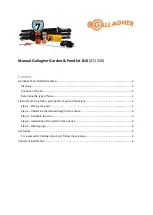
16
MX-10 Extreme
P A N A N D T I L T
Mirror pan and tilt are controlled on channels 8 to 11. The course control channel sets first 8 bits (the most significant
byte or MSB), and the fine channel sets the second 8 bits (the least significant byte or LSB) of the 16-bit control byte.
In other words, the fine channel fine-tunes the position set by the course channel.
Speed control
T R A C K I N G C O N T R O L
Tracking control is enabled by setting the speed channels (12 and 13) to one of the tracking values listed in the DMX
table, typically 0.
With tracking control, the speed at which effects move is determined by the cross-fade time between two positions or
scenes. The controller divides the move into steps and updates the fixture with small changes at the rate required to
achieve the fade. The fixture “tracks” the changes and averages them with a digital filter algorithm to provide smooth
movement.
V E C T O R C O N T R O L
With vector control, movement speed is determined by the speed values on channels 12 and 13. This provides a way to
control speed on controllers without cross-faders. Vector control also provides smoother movement, particularly at
slow speeds, with controllers that send slow or irregular tracking updates.
When using vector control, the cross-fade time must be 0.
B L A C K O U T
When “blackout while moving” is selected on channels 12 or 13, the shutter closes when the effect moves to make the
transition invisible. The shutter opens when the movement is complete.
P E R S O N A L I T Y O V E R R I D E S
Channel 12 provides tracking values that allow you to override the pan/tilt speed personality setting. Channel 13
provides tracking values that allow you to override the shortcuts setting. See the DMX table for details.
Summary of Contents for MX-10 Extreme
Page 1: ...MX 10 Extreme user manual...
Page 33: ...PCB CONNECTIONS E...
















































